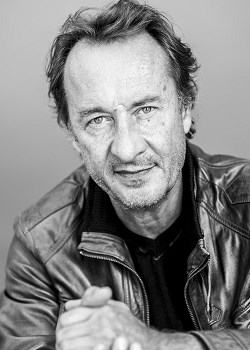Philippe Berthet

Born in Thorigny-sur-Marne on 22 September 1956, Philippe Berthet learned about drawing cartoons in Brussels from 1974 onwards, by attending courses held by Eddy Paape at Saint-Gilles Academy and by Claude Renard at the Saint-Luc Institute.
Adopting the provisional pseudonym of Philibert for his first test pieces in Le 9e rêve in 1979, an anthology of the best works of the members of Atelier R, he then worked with his friend and fellow student, Antonio Cossu, on the magazine Aïe!, then on Spatial.
He was taken on by the magazine Spirou in 1981 for Couleur café (based on a script by Antoine Andrieu), followed by Hiver 51 and Été 60 (scripts by Andréas), the Privé d’Hollywood trilogy, based on the detective stories by François Rivière and José-Louis Bocquet, L’œil du chasseur with Philippe Foerster, La Dame, le cygne et l’ombre with Dominique David.
In 1991, he illustrated a script by Tome (Sur la route de Selma) for the prestigious Aire Libre collection and two years later, he presented Halona, his first complete work as an author. At the same time Berthet was working with his friend Cossu on producing the four volumes of Marchand d’idées at Glénat, a peculiar mix of two different styles, the combination of which formed a totally original one.
In 1994, his clear linear drawing using well thought out framing and lighting, was used for Yann’s script for the series Pin-up at Dargaud (Europe Comics in English, 2017), a fictionalized account of the world of Betty Page, the queen of erotic photos in the 1940s and '50s. Deliciously retro, this series was initially meant to be a tribute to Milton Caniff and his comic strip Male Call, intended to entertain the GIs at war.
More recently, Berthet has also collaborated with Zidrou on a tale of Australian crime fiction, Le Crime qui est le tien (Dargaud 2015, Europe Comics in English 2018), as well as Sylvain Runberg on the thriller Motorcity (Dargaud, Europe Comics 2017).
